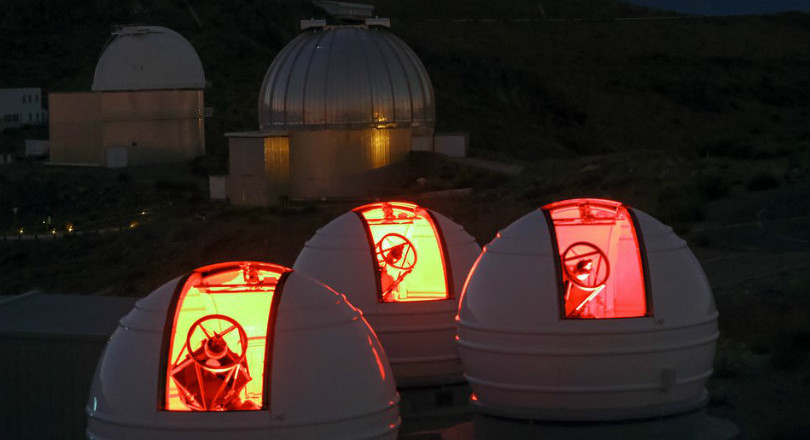
Yesterday three ExTrA telescopes started their first observations. Located in the Chilean desert, they are tasked with searching for planets using inexpensive hardware.
The French project ExTrA (which stands for Exoplanets in Transits and their Atmospheres) is aimed at planets that move in front of their star from the earth's perspective. During such a motion – known as a transit – these planets block a small portion of the starlight, causing the star to shine fractionally less intensely than normal for a brief period. The ExTrA telescopes are intended to clearly observe this decrease in light from the surface of the earth. And they do this with a very modest mirror diameter of 60 cm, which should be enough to observe even planets roughly the size of earth.
ROBOT-CONTROLLED FIBRES
Normally a telescope would use a CCD for this – a chip comprising light-sensitive cells. However, in the case of ExTrA, this would be an expensive option. Such telescopes are aimed at red dwarfs – small, cool stars that primarily emit a great deal of infra-red light. And large CCDs that are suitable for infra-red are pretty pricey items, as Head Researcher Xavier Bonfils (Institut de Planétologie et d'Astrophysique de Grenoble) states in a mail.
That's why the ExTrA telescopes don't use CCDs, but fibre-optics. A robot places these in exactly the right location to receive the light from a red dwarf. A number of robot-controlled fibres then sense the light from neighbouring stars to determine the impact of the earth's atmosphere on the starlight. The light originating from the rest of the area of the sky being observed – which is not important to this measurement – is not stored, as would be the case with a CCD.

The fibre-optics of all three telescopes (which would usually observe different stars) then lead to one and the same spectrograph – an instrument that separates starlight – so that the astronomers can determine the amount of light per wavelength. ExTrA thus saves money in two different ways: by avoiding the use of infra-red CCDs and by using just one spectrograph for three telescopes.
DOZENS OF PLANETS
But we shouldn't expect a particularly large harvest of exoplanets from ExTrA, as with the Kepler space telescope. ‘Simulations show that over four years, we'll only find just a few dozen exoplanets,’ says Bonfils.
But this number should include a few roughly the size of the earth, which also have the right temperature for liquid water, and which might thus support life. ‘And for these planets, space telescopes such as the James Webb Space Telescope and giant telescopes on earth can then be used to ascertain whether they have an atmosphere.’
Image: ESO/Emmanuela Rimbaud, ESO/Petr Horálek
Liked this article? Subsribe to our free English newsletter
Nieuwsbrief
Vond je dit een interessant artikel, abonneer je dan gratis op onze wekelijkse nieuwsbrief.

